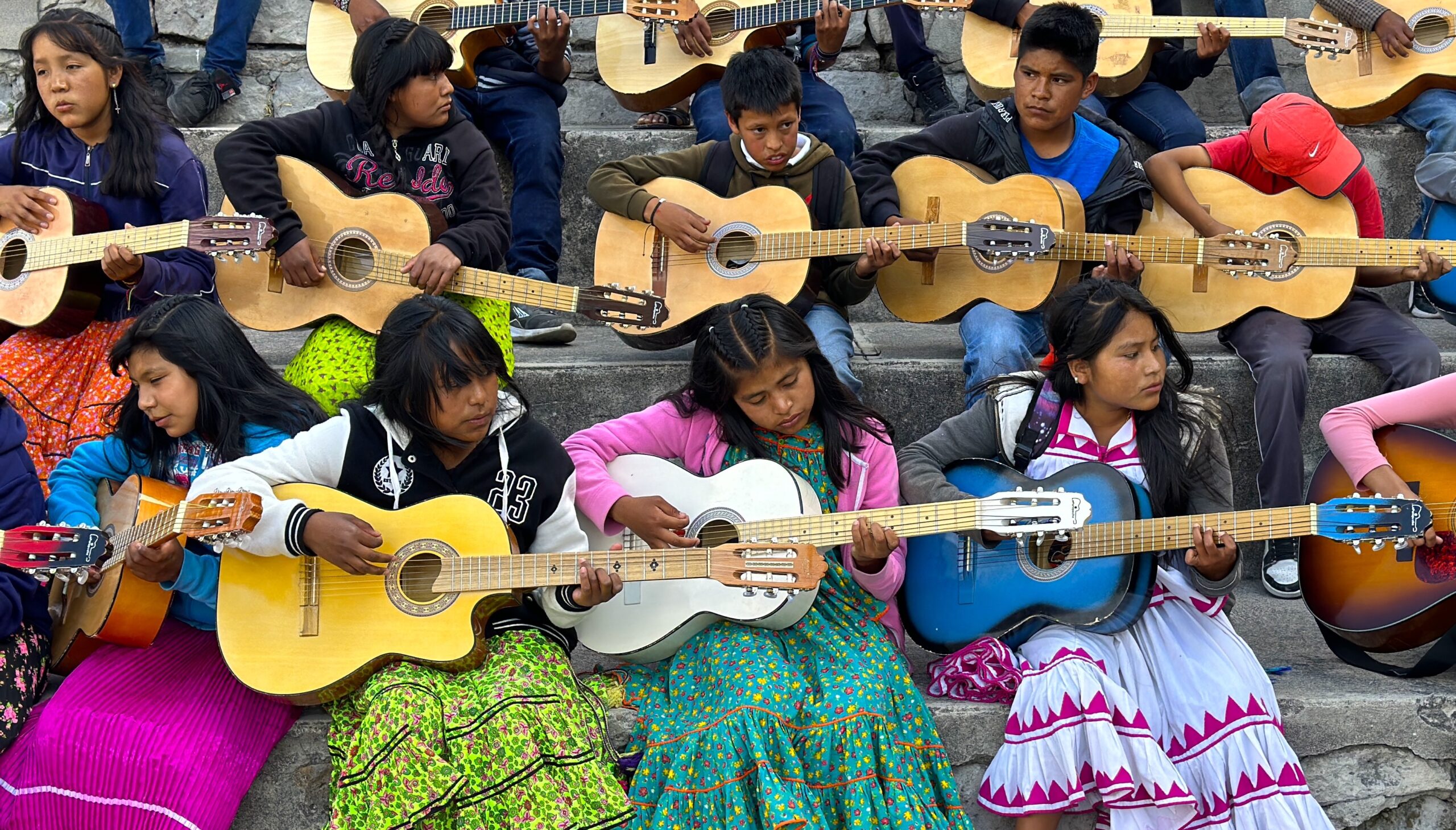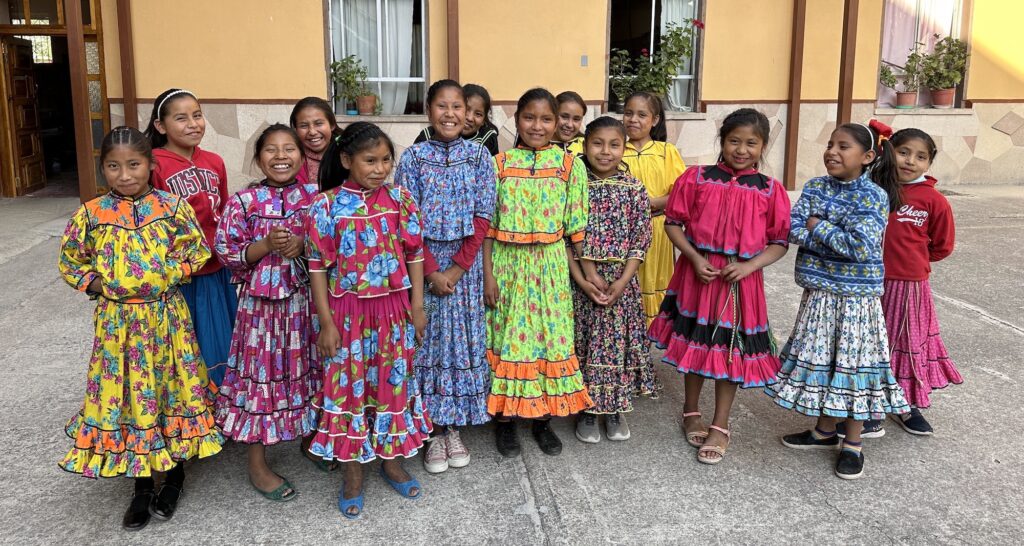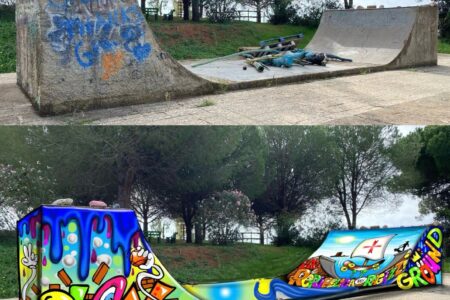The Most Important Race of the Rarámuri

The Rarámuri, or Tarahumara, indigenous groups in the northern state of Chihuahua, Mexico, have a rich history of inhabiting and caring for the land. Renowned for their long-distance running ability, the Rarámuri have traditionally lived in natural shelters such as caves or cliff overhangs, while Tarahumara women proudly wear vibrant traditional clothing.
According to the UN, less than 1% of indigenous peoples complete higher education, highlighting the educational challenges faced by these communities. According to the World Bank, in Latin America, where 8% of the population is indigenous, 43% are affected by material poverty, with 14% living in poverty (less than $2.00 per day) and 17% living in extreme poverty (less than $1.90 per day).

Collaborative Efforts to Empower Indigenous Children and Youth through Education
In 2023, A Chance In Life partnered with four local organizations in Chihuahua, Mexico, to address the educational needs of indigenous children and youth in the Tarahumara region. Two of these organizations, Internado Sagrado Corazón de Jesús and Casa Hogar San Luis Gonzaga, are managed by the Catholic congregation of sisters known as Hermanas Siervas del Sagrado Corazón de Jesús y de los Pobres. The other two, Casa Hogar Betania and Instituto Técnico Sisoguichi, are managed by civil associations.
These organizations have long been dedicated to serving indigenous communities, even preceding government intervention. Notably, three of these organizations have worked closely together, clearing the path for Tarahumara children and youth to graduate from technical or university institutions.

The Race Begins
At Internado Sagrado Corazón de Jesús in Sisoguichi, young Tarahumara girls, with shy smiles and adorned in colorful dresses, fill the residence’s main hall. As I greet them with the Tarahumara word for “hello,” “Kwira,” they respond in unison, “Kwira!” Sister Maria, the program director, explains that most of these girls are newcomers, as the home had to operate with minimal capacity during the COVID-19 lockdowns. This boarding school, in operation since 1907, offers a life-changing opportunity for indigenous Tarahumara girls. With over 50 girls currently residing there, the number is set to increase to 65 next year. The girls complete their elementary education here, marking the first miles of this race.

Continuing the Race
Once the girls complete their six years of elementary education at Internado Sagrado Corazón de Jesús, they join other indigenous children and youth at Instituto Técnico Sisoguichi. Originally managed by the Marists’ Brothers, this non-profit organization now falls under the management of the Diocese. The high school provides education, residency, nutrition services, and a range of workshops on music, computers, arts, and sports for Tarahumara boys and girls over a three-year period.
Towards The Final Straight
The final steps in this transformative process is progressing to preparatory school (bachillerato) in Creel, a small town located 60 miles away from Sisoguichi. Creel, known for its tourist attractions such as the Copper Canyon, is where indigenous girls reside at Casa Hogar San Luis Gonzaga, managed by the Sisters Siervas del Sagrado Corazón de Jesús y de los Pobres, while indigenous boys reside at Centro de Estudios Ichimeame, overseen by the Marists’ Brothers. Both centers provide opportunities for high school completion and pave the way for further technical or university studies in Chihuahua. Many students choose to stay in Creel, where they can pursue technical careers and earn a bachelor’s degree in education or other fields.

Overcoming Challenges
This long race, spanning for over a decade, is far from easy. Indigenous children and youth face numerous obstacles, such as the risk of girls dropping out due to parental reluctance to send them back after school breaks or the potential dangers of armed groups associated with drug cartels taking boys away. Additionally, along the way, they must overcome environmental barriers like hypothermia, malnutrition, and cold-related diseases prevalent in the high mountains and secluded canyons where the Tarahumara reside. Winter temperatures can plummet to as low as 5 degrees Fahrenheit (minus 15 degrees Celsius). Thanks to the visionary efforts of these organizations, Tarahumara children and youth can now embark on the most important race of their lives, knowing that organizations such as A Chance In Life is there to support them.
The Power of Partnership
Collaborative initiatives and dedicated organizations such as our Partners in Mexico, play a vital role in removing barriers that hinder indigenous children and youth from accessing educational opportunities. This transformative journey undertaken by the Rarámuri is only possible by the power of partnership that breaks the cycle of poverty and inequality. At A Chance In Life we understand that working in partnership with local organizations is the best way to nurture the children and youth’s potential, thus, we contribute to a more inclusive and equitable society while empowering future generations to thrive.
Recent posts

Beyond Limits – Celebrating Women’s Journeys of Strength
On a bright and inspiring day in celebration of International Women’s Month—and in honor of International Women’s Day— at The Village, A Chance In Life…
read more
International Women’s Day: The Power of Investing in Young Women
Remember Rehimush? Last year, we shared with you the inspiring story of a young woman from Ethiopia, whose life was transformed through education and the support…
read more
Designers of their Futures: Empowering Youth Through Art at La Repubblica dei Ragazzi
I am thrilled to share this inspirational video with all of you. At La Repubblica dei Ragazzi, our program in Italy, something magical is happening!…
read more
 Donate
Donate